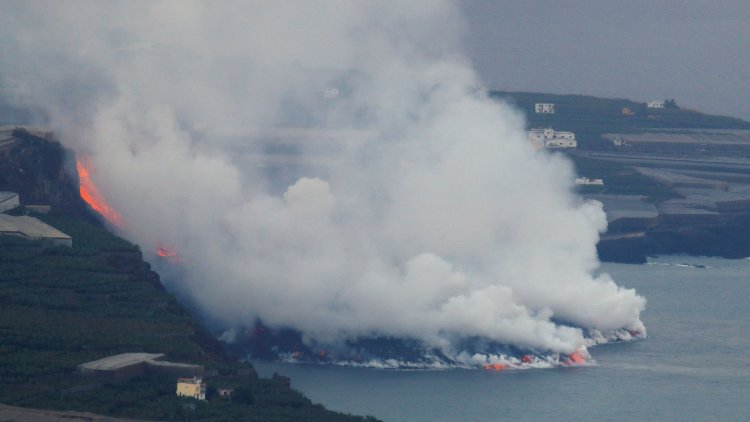Lava from the volcano on the island of La Palma reaches the sea
The lava from the volcano that erupted ten days ago on the island of La Palma, in the Spanish archipelago of the Canaries, has reached the ocean, causing the emission of potentially dangerous gases, although the risk to the population is currently considered to be "very minor", according to a Spanish official.

A Spanish official on Wednesday downplayed the risk of toxic gases harming local populations after molten lava from a volcano in the Canary Islands hit the ocean, 10 days after a dramatic eruption that forced thousands to flee.
A vast stream of white-hot lava reached the sea late on Tuesday, sparking fears the contact would release clouds of acidic gas into the air, which could irritate the skin, eyes and respiratory tracts, possibly causing breathing difficulties.
But windy conditions overnight blew the gas towards the sea, reducing the risk, said Ruben Fernandez, a senior official with the Canary Island's Pevolca volcanic emergency committee.
"We have a strong wind in the area which is blowing the cloud of gases towards the sea, so the risk for the local population is much lower" than initially feared, he told Spain's public radio.
The Cumbre Vieja volcano straddles a southern ridge in La Palma island, home to 85,000 people, and erupted on September 19, forcing some 6,000 people to flee and destroying hundreds of properties.
Since its eruption, it has spewed out rivers of lava that have slowly crept towards the sea, finally hitting the ocean on Tuesday night just after 11:00 pm (2200 GMT).
Dramatic television images showed a stream of glowing lava cascading off a cliff into the water, churning up huge clouds of vapor and gas.
As it hit the water, the lava quickly built up an impressive deposit "more than 50 meters (164 feet) high", the Spanish Institute of Oceanography tweeted, posting pictures from its research vessel.
Some 300 residents of Tazacorte, a small town on La Palma, were ordered to stay at home early Monday as a precautionary measure to avoid harm from the emissions.
Even before that, the Spanish archipelago had set up an exclusion zone of 3.5 kilometers (two miles) around the site, which also extended two nautical miles into the sea.















